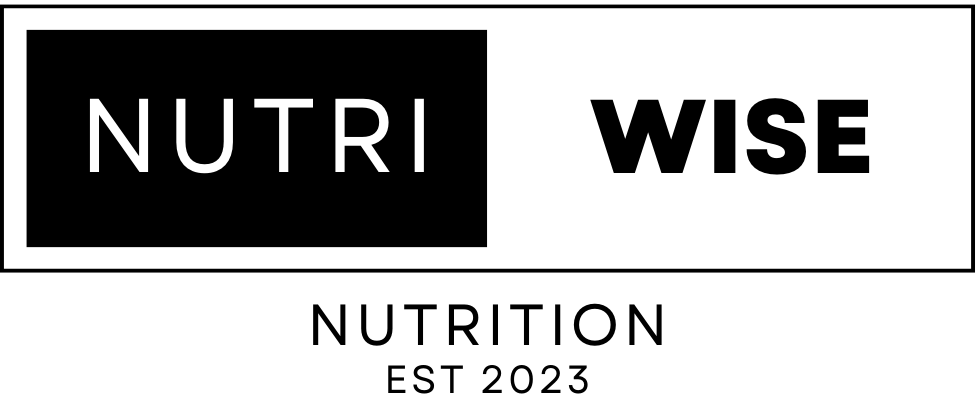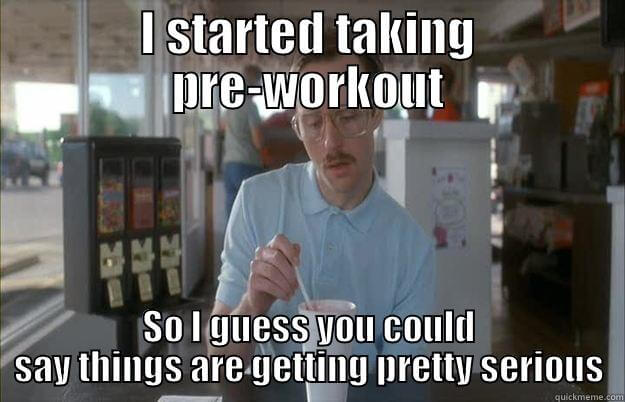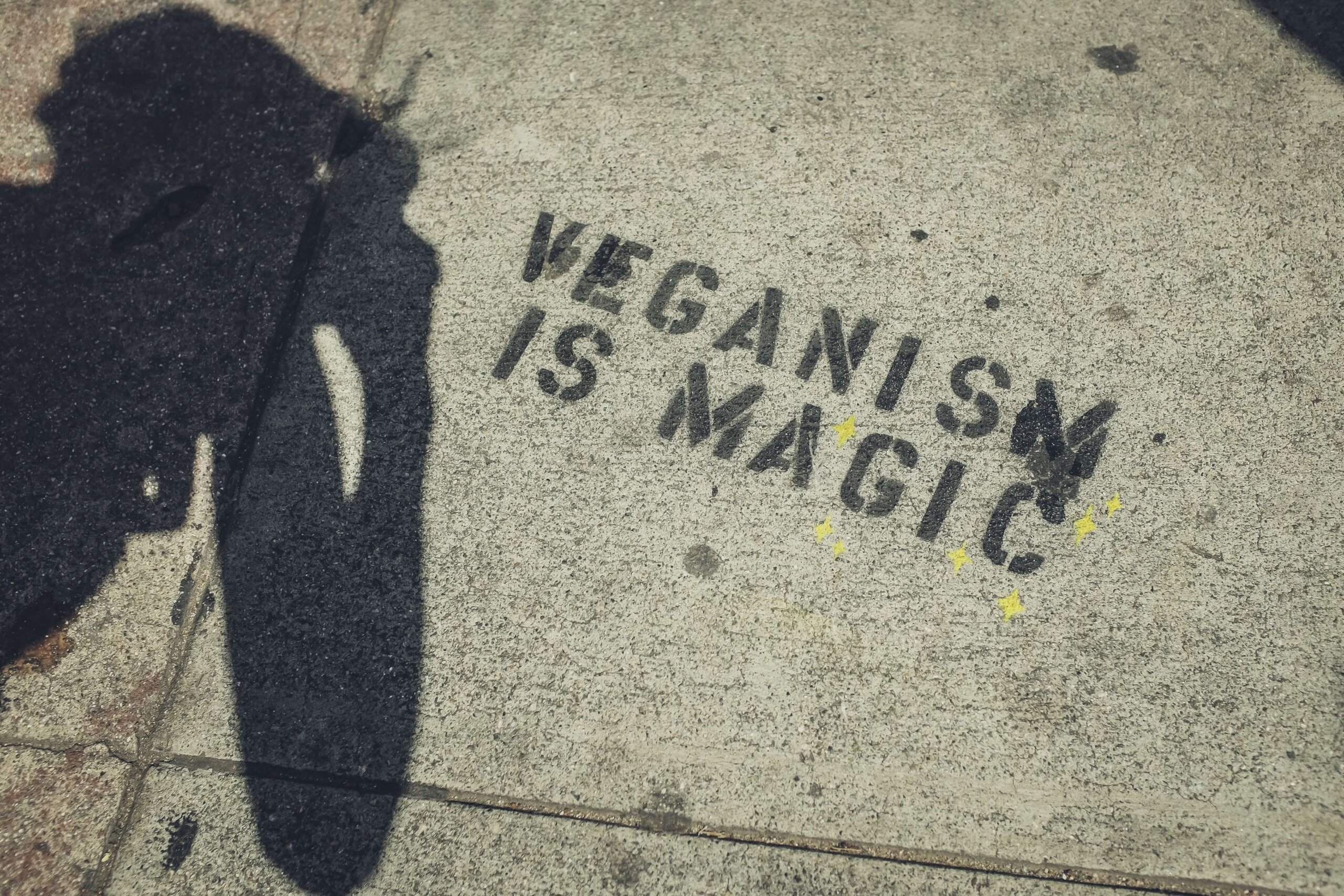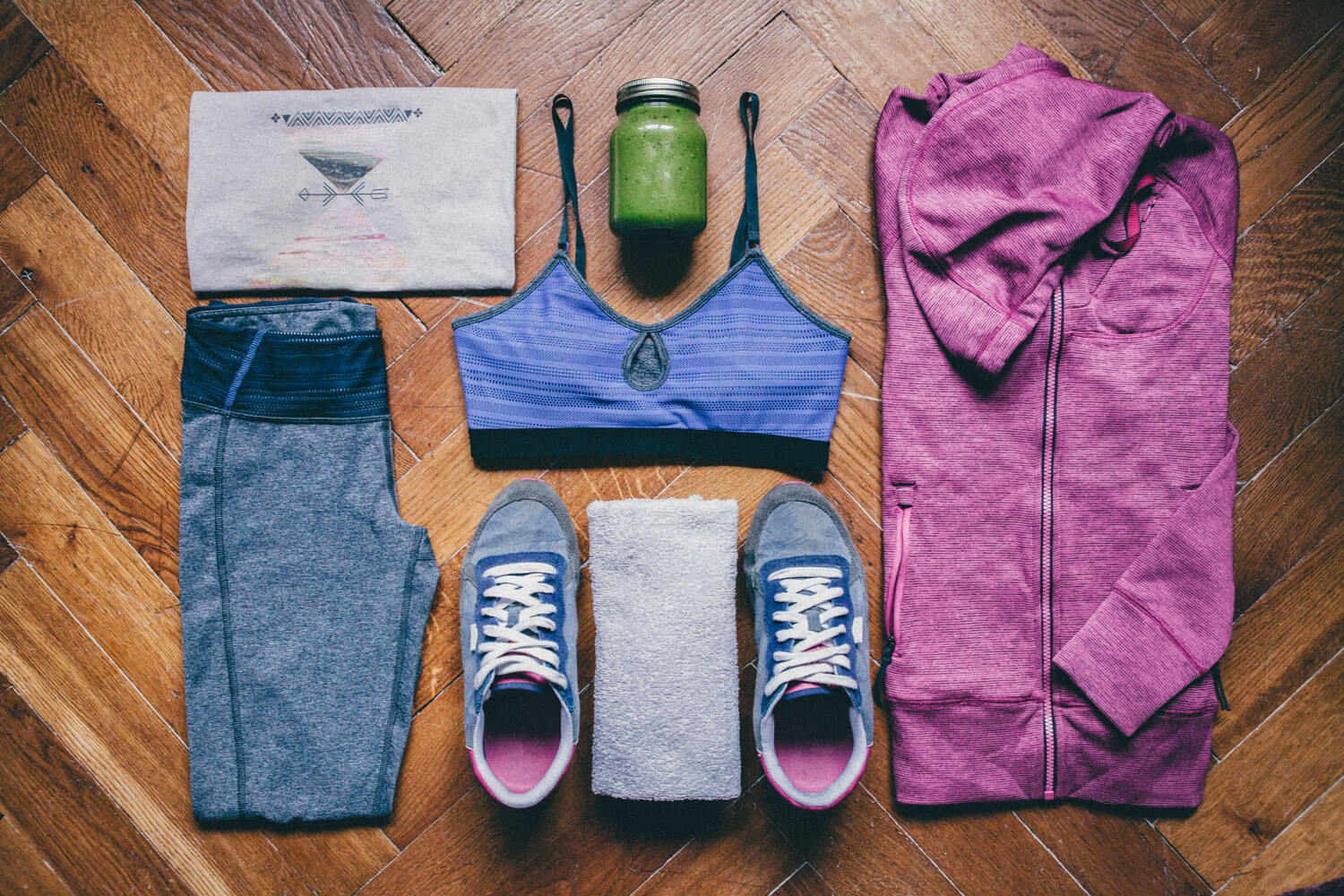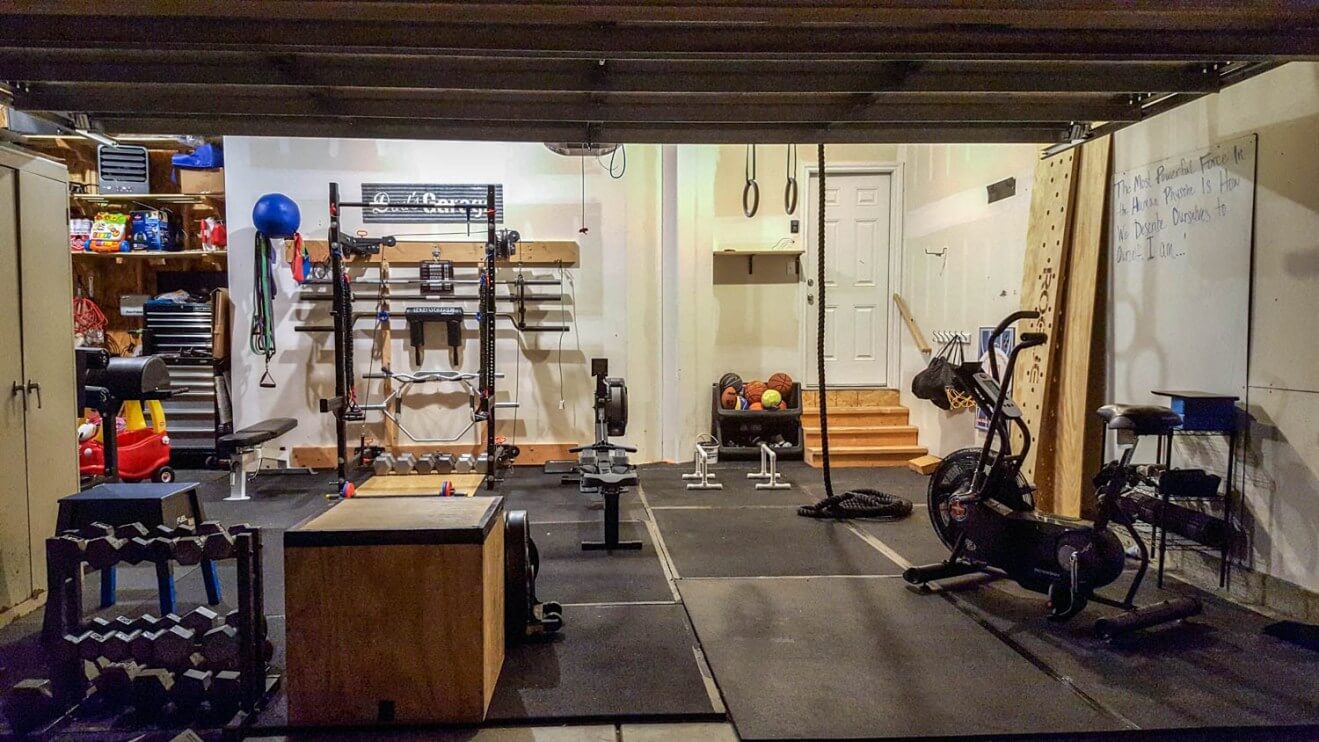Pre-Workouts: Part 2
Pre-Workouts: Part 2
Welcome to Part 2 of this special blog series on pre-workouts. If you haven’t read Part 1 already, click here to fill yourself in.
In Part 1 we covered the pitfalls and problems with pre-workouts. Hopefully you haven’t been turned off them completely, because in this post we’re going to go over what to look for in a pre-workout and the dosages of ingredients so you know what to look for to get the best value for money as well as best pump you’ve ever had.

Ingredients
Caffeine
The primary purpose of caffeine is to give you an energy boost prior to your workout.
Caffeine has also been shown to not only boost energy levels, but blunt muscle fatigue, increase focus and even dull perception of pain, which can be useful to get a few more reps done before resting. More reps means more load on the muscle. More load on the muscle means more growth.
#winning
Tolerance varies from person to person and if you’re a heavy user of caffeine in your daily life you may not notice as much of a difference when using it before the gym because as discussed in Part 1, continued use over a long period of time dulls your body’s natural reaction to it.
Generally, most pre-workouts will contain between 100 and 200mg per serve. Most articles recommend anywhere from 1.8mg to 3mg per kg of body weight. For me, weighing 100kg, I find that 1.8mg per kg works fine (180mg). Anything above 300mg and I find I get dehydrated quickly and at 350mg I get heart palpitations and anxiety. That’s per dose though, not throughout the day. I can still have 2-3 coffees in a day and have a pre-workout at night, train, then sleep fine. The same may not be able to be said for someone 3/4 my weight.
Another thing to take in to account is caffeine is also a diuretic. Too much and you’ll be stimulating those bowels whilst straining with a weight…possibly squatting or dead lifting…not what you want to happen at the gym.
A big tip with caffeine in pre-workouts. If the product doesn’t list how much caffeine it has, don’t use it.
If you’re sensitive to caffeine there are pre-workouts that don’t contain any, but you’ll probably be better off going with a BCAA product instead.
BCAA’s
BCAA’s are Branched Chain Amino Acids. They are Leucine, Isoleucine and Valine. They are often represented in a ratio format of 2:1:1 which means for every 2 parts of Leucine in your scoop, there is 1 part Isoleucine and 1 part Valine. Some will have other ratios, and more is not necessarily better, despite what the label says – but the scientifically proven ratio is 2:1:1.
The primary purpose of having BCAA’S before a workout is to improve endurance. They can also be used to preserve muscle whilst doing fasted workouts – it’s much easier for your body to breakdown muscle when fasted than it is to utilise fat stores, so a BCAA product can assist in preserving that hard earned muscle.
BCAA’s are used directly by your muscles as a fuel source and each of them does something different in the body.
Leucine increases protein uptake by the body by turning on a metabolic pathway called mTOR. Isoleucine allows the body to use more glucose as energy during your workout. Valine helps to blunt fatigue by preventing serotonin from being released in to the body. Serotonin tells your body its tired, which you don’t want while you’re working out.
Put all these together and you get a compounded effect that can give you more endurance, increase muscle size and allow you to burn more fat without your muscle being broken down for energy.
As mentioned above, with dosage you are ideally looking for a ratio of 2:1:1 (Leucine:Isoleucine:Valine). Some BCAA supplements have a higher amount of Leucine in them, but there is no evidence that having a ratio higher than 2:1:1 is that much better, so do a cost/benefit on a product that has a higher Leucine ratio and see if it costs more than another with the 2:1:1 ratio. Most recommend doses are 2g:1g:1g which is easy to break down in to the right ratio (slightly more in the serving won’t hurt either). Again though, dosage varies per person as well, so you do need to test this and take note of things like muscle soreness and fatigue and increase if needed.
Some supplements have 1g:500mg:500mg so its important you do your maths when reading the label and find out what works for you.
Not all pre-workouts include BCAA’s and they can be taken in free form by themselves as well. In my opinion the best value for money is a pre-workout that includes BCAA’s.
Beta-Alanine
If you’ve ever had a pre-workout you may be familiar with the tingles associated with Beta-Alanine. It can feel like your skin is crawling sometimes. This is because its been absorbed and is pumping around your body. The tingle is the interaction with your nerve endings. When you feel this you’re more than ready to go!
Beta-Alanine increases muscle endurance by buffering hydrogen ions produced by lactic acid in the muscles. This is invaluable over the course of your workout because you’ll be able to continue muscle contractions with minimal strength loss as your workout progresses. In lamens terms, this means you can lift the same weight for longer with a higher intensity and do more in your workout.
Dosages are usually 2g per serve. This is dependent on how much you already have in your muscles as well and like creatine, it works best when you have a complete muscle saturation, meaning there is more available for your muscles to use. If you are using a supplement with lower doses it makes it harder to achieve this saturation.
Creatine
Firstly, creatine isn’t a drug. Its one of the most researched and safe substances to use and has been in use since the 80’s.
Creatine is an incredibly important ingredient in your pre-workout. It is one of the most researched substances in the history of sports and has a whole host of benefits. It comes in 2 main forms. Creatine Monohydrate and Creatine Hydrochloride. The most common form is Monohydrate.
Creatine helps produce energy in cellular function by being absorbed from the blood stream by muscles, then has a high energy phosphate attached to it and becomes creatine phosphate. This new form of creatine is then used to produce ATP (adenosine triphosphate) which is used as a high energy source by the muscle cells to contract with great force. In simpler terms, creatine is an insanely potent energy source for the muscles to use when you lift weights.
Creatine is also found in meat and fish, so if you’re vegetarian or vegan its even more important you take note of whether you’re getting it or not.
Like Beta-Alanine, it works best when your muscles reach a saturation of it. Most supplement manufacturers will recommend a loading phase of approximately 20g of it per day (for creatine monohydrate). Thats not necessary if you eat an appropriate amount of meat. Generally you can take it before and after a workout and achieve the same thing.
Dosages vary on the form of creatine you take. Creatine monohydrate is usually 5g per serve. Creatine hydrochloride is usually 2g. This is because creatine hydrochloride is more efficiently taken up and there is less “wastage” than the monohydrate form.
Not all pre-workouts include creatine in them. If you notice side effects such as an upset stomach, switch over to a supplement that has Creatine HCL instead.
Citrulline Malate
Citrulline Malate increases ATP which is cellular power. It helps creatine phosphate production which means you’ll recover faster between sets and between exercise sessions. Another function is to increase Nitric Oxide (NO) levels in the blood stream. Increasing these levels relaxes your blood vessels. This in turn allows them to dilate and widen, allowing more blood to pump through to areas that need it, such as muscles. This is also called pump.
If you don’t know, pump is that tightness and swelling you feel in a muscle when you’re using it. Its blood rushing to the area and not leaving as quickly as it enters. Let Arnie explain it to you:
Some pre-workouts include L-Citrulline instead, which is also fine. There is some debate about what is better, but don’t stress about it. If you’re getting the right size dose you’ll notice the difference. The general consensus on dose size is 5-6g of Citrulline Malate or 4g of L-Citrulline.
If a pre-workout doesn’t include a form of Citrulline it most likely contains some form of Beetroot Extract which also increases NO levels. Doses and effectiveness depends on what they pair it with. Usually it will be in some form of blend with a name like “Super-Pump Matrix 4000”. We don’t stock products that use proprietary blends, so don’t worry about that in our store.
Betaine
Betaine has been around for a relatively short time in pre-workouts. Its a great substance that helps to increase muscle strength, power and mass whilst also enhancing fat loss.
It may also be listed as TMG or trymethylglycine.
Without getting too deep in to biochemistry, betaine helps the body to synthesise creatine and helps with muscle protein synthesis which equates to strength and mass gains in your muscles. Some studies have also found that betaine helps with recovery and repair of liver and joints.
In terms of serving sizes, most pre-workouts have about 1-1.5g per serve but many recommend breaking doses up throughout the day to equal up to 3g, but for most people it will be adequate.
Take Home Points
When you put these ingredients together you end up with substances that compliment each other and allow you to break through plateaus with ease. You may see from the ingredients above that they do all interact on some levels and compliment each other.
Its not essential that your pre-workout includes all these ingredients, but when you put them all together the results speak for themselves.
Finding the right pre-workout is a challenge, but once you’ve found one that works for you, stick to it until you need something more.
Look for larger scoop sizes. Generally this means that the ingredients aren’t skimped on. There are some exceptions to this but that is based more on individual needs than anything else.
Remember to cycle off pre-workouts and caffeine for at least a week every now and then.
Try not to believe the hype on a pre-workout until you’ve read what it has and doesn’t have in it. They’re designed to help you get the best out of your workout, but if they’re skimping on ingredients or including a bunch of proprietary blends you need to know what you’re taking
Above all – Enjoy your workouts.
